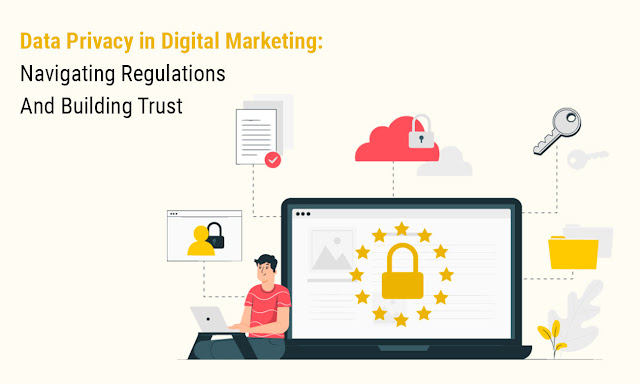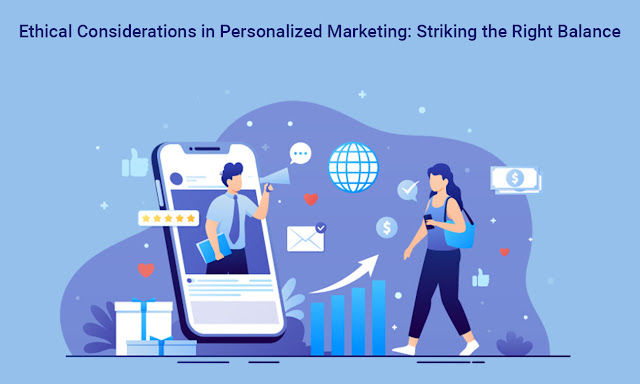Mistakes in Website Design to Avoid in 2023
Did you realize that your website's design accounts for 75% of its trustworthiness? If your website is poorly designed, visitors could think your business is less reliable. Avoiding these mistakes can enable your company to stand out online for the correct reasons, whether you're creating a new site from scratch or updating your existing one. You'll discover the most typical blunders in website design in this article. You’ll also learn actionable ways to fix or avoid these errors altogether.
Not Putting Accessibility First
The most common error in website design is to treat accessibility as an afterthought. The following are the top four accessibility mistakes:
Inadequate Color Contrast
Color contrast is a common accessibility mistake. This error frequently happens because businesses build websites that employ their trademark color scheme, which isn't typically made with accessible design in mind. Text and icons may be challenging to read when a website's color scheme lacks enough color contrast between the background and foreground colors, especially for people with visual impairments like color blindness. Almost 80% of home sites have problems with color contrast, according to the 2022 WebAIM Million annual study!
Inadequate Or Absent Alternate Text For Visuals Or Photos
The alt text of images is used by screen reader users to explain what the image or graphic means. You are isolating readers who require it to browse your site if it is absent or inadequately describes the image. Since images are a component of the content on your website, it's crucial to approach them in the same manner as you would standard website copy: What message is the graphic on your page attempting to convey? Make sure your alt text conveys the same concept.
Lacking Or Insufficient Visual Focus Indicators
Visitors won't be able to fully utilize your site's features without visual focus indications. Around interactive elements like links and buttons, focus indications typically take the form of outlines. Users who are browsing with a keyboard and can see the screen need a clear visual cue to tell them which element on the page is now the focus so they know exactly where they are on the page and what to expect when they interact with the active element.
Ignoring Easily Available Names Or Labels
Be considerate of users of assistive technologies if your website uses visuals to deliver information. When creating websites and other elements that display information graphically, that same information should also be labelled in a way that is accessible to assistive technology.
Forgetting How Crucial Responsive Design Is
Even without taking into account tablets, mobile devices accounted for more than 58% of all website traffic in the second quarter of 2022. You run the danger of driving away visitors and raising your bounce rate if your website isn't equally user-friendly on mobile devices as it is on desktop. More people than ever before visit websites on a variety of devices, including phones, tablets, computers, and even TVs. Visitors will lose trust in us and click/tap away from the site if our content appears negatively on any of them. The breakpoint era has arrived! Using tools in a desktop web browser is a common way to create websites. One typical error is assuming your clients would browse your website in desktop format and failing to take mobile users into account.
Aesthetics Over User Experience
Prioritizing form over form is one of the website design errors that has become more prevalent over the past few years. With the huge growth of new media and design throughout the years, virtual success demands excellence. Sadly, this has led to a wave of overuse of design and graphic elements that appeal to users' senses but fall short of or feel divorced from a website's genuine goal. This can take many different forms, from design fads that weaken a brand's value proposition to overuse of animation, content, and bulky visuals that improve the aesthetics but serve no practical use. It's not necessary to adopt a minimalist or new modernist aesthetic; rather, the emphasis should be on balance and how the form serves the function.
Not Making A Customization Investment
You pass a clothes store with a unique, eye-catching window display while downtown walking. It creates a story with a backdrop and appealing content while offering a selection of clothing items for sale. Then, nothing draws your attention when you pass a store with just a few items of clothing displayed on mannequins in the window. Consider your website to be the online storefront for your company. It should embody your corporate identity and have a distinct vibe. Using a generic template without personalizing it is one of the worst web design errors. For instance, using the default hero banner can be detrimental. Everybody has seen them: the full-width image with, often, white or black text and a button resting on top, immediately beneath the navigation. To make the lettering readable, the image is either cleverly cropped, extremely light, or extremely dark. There are a few factors that make me believe this is a terrible choice. The first is that it is so typical that it has turned uninteresting and formulaic. What was once a striking design choice has become boring.
Using Non-Converting Features
Using wasteful features is another frequent mistake. No matter how visually appealing a feature may be, keep in mind that the effectiveness of your website should always come first. Relying on rotating carousels to provide numerous bits of material at the same level is a common mistake. Many studies have been conducted that show people do not frequently interact with carousels, especially on mobile where the interaction cost is significant.
Lack Of A Hierarchy
Have you ever been on a website and been unclear of where to concentrate your attention? If so, you probably found yourself on a page with no hierarchy. Your website's typography should use headings and subheads to indicate importance, just like a newspaper does. Ordering through your website is both aesthetically pleasing and practical. The arrangement of website components gives your site a cogent structure that encourages users to take specific actions, accomplishes the main objective, and, as a result, produces a seamless experience.
Solving this is difficult, especially if your business caters to a diverse clientele with various objectives. It would be preferable if you did it, though, as this problem could significantly affect how visitors to your site interact with it. Users are misled by the absence of hierarchy, which keeps them from achieving their objectives.
Having Trouble Navigating
Uncertain navigation is a problem since it increases the friction visitors feel when they first arrive at your website. A smooth transition from first visitor to advocate will be ensured by having simple navigation and consistency throughout your many touchpoints and user journeys. As more and more businesses expand into the digital realm, content on the website becomes increasingly packed and complex.
Not Clearly Stating Your Company's Mission
Visitors should have no trouble understanding what your business performs once they arrive at your website. What if the image is even slightly hazy? Yes, visitors to your website may leave. When someone loads your website, the first thing they do is check to see if they are in the proper place. Does your website make it apparent what goods or services it offers above the fold? Your website should increase your company's credibility. A website makeover is probably necessary if it isn't expressing your company's goal and reassuring visitors that they are in the proper place.
Eliminate Common Website Design Errors To Increase Site Credence
You can improve your site's reliability and provide visitors with an engaging experience by avoiding typical website design blunders. A circular method is necessary for web design because it ensures effective alignment across teams, stakeholders, and user knowledge. There is no better way to make sure your website is heading in the correct path than to test and iterate, including user research and usability testing.




Comments
Post a Comment